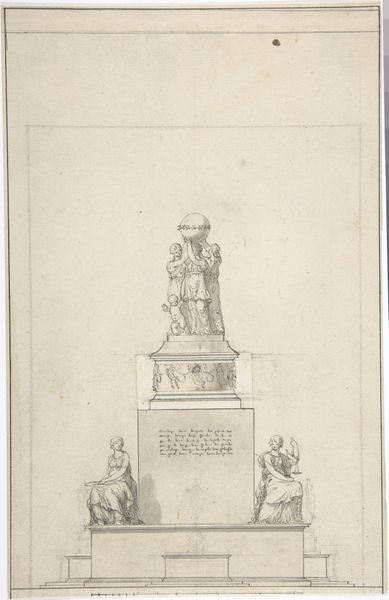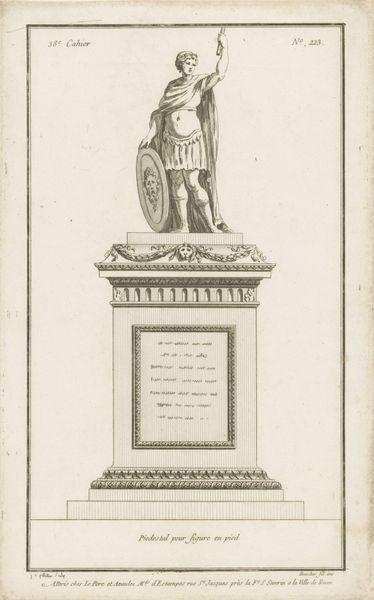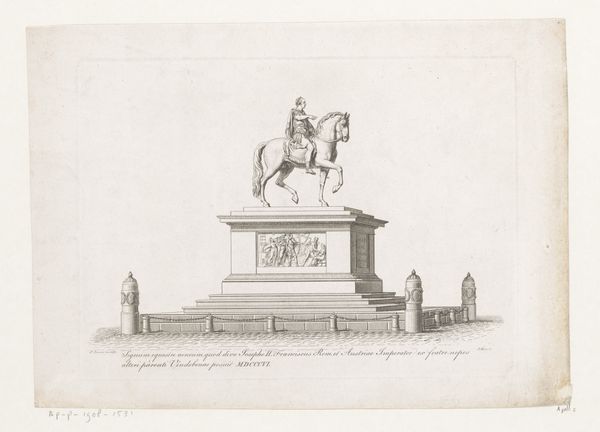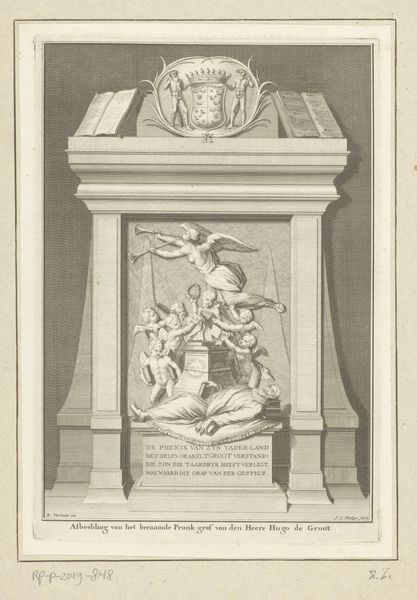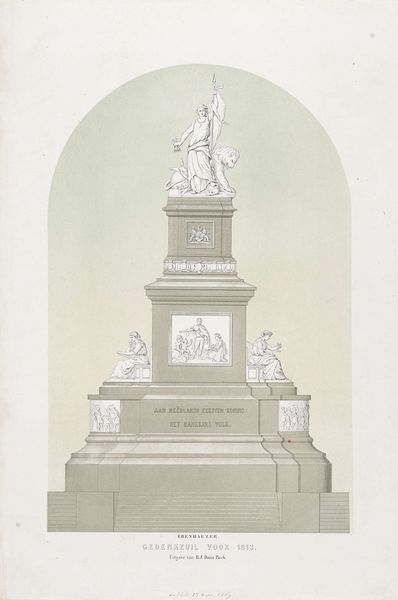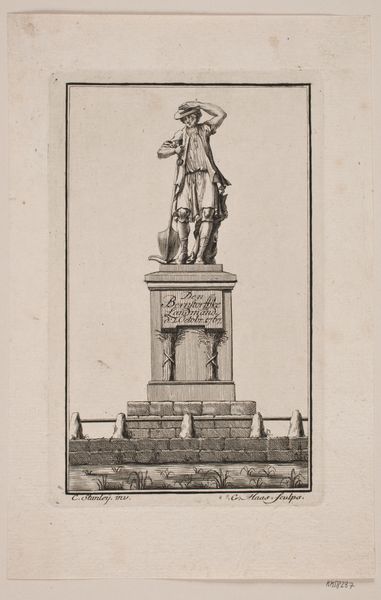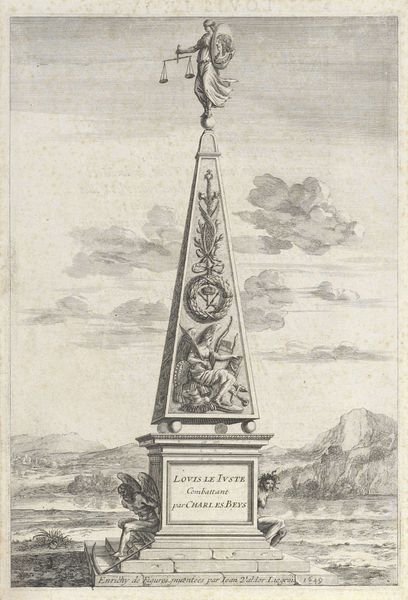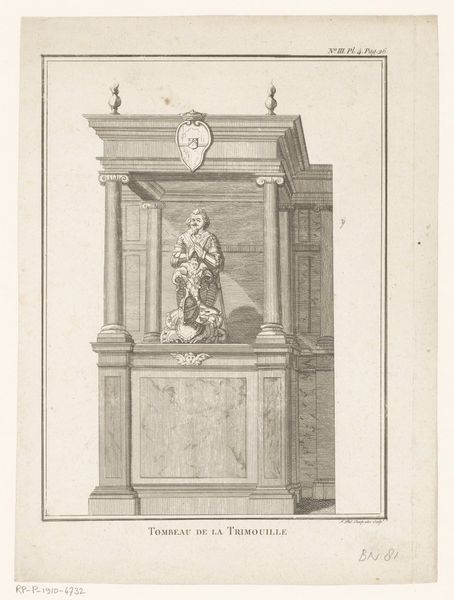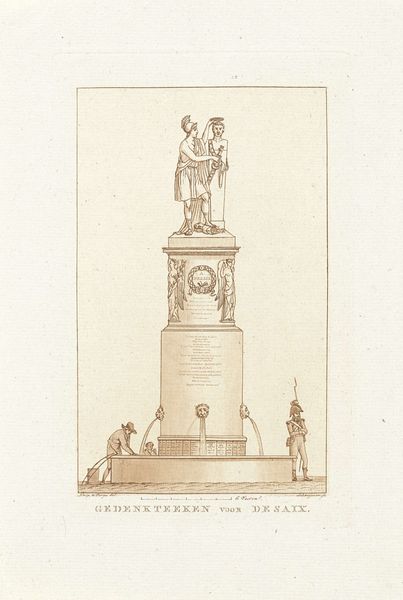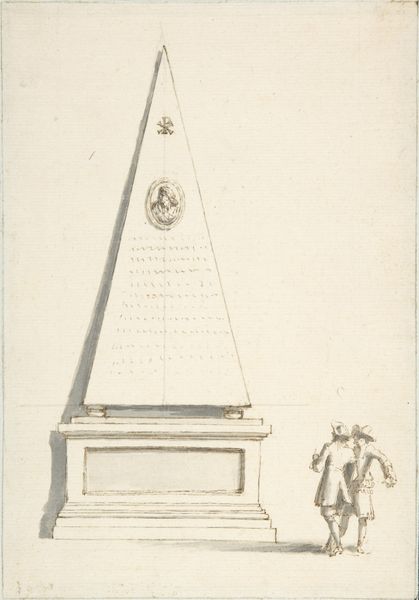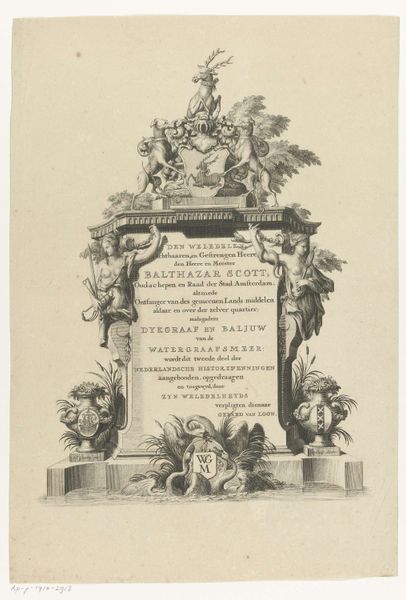
print, engraving
#
neoclacissism
# print
#
landscape
#
cityscape
#
history-painting
#
engraving
Dimensions: height 192 mm, width 125 mm
Copyright: Rijks Museum: Open Domain
Editor: Here we have "Ruiterstandbeeld bij de Portugese Synagoge, 1816," dating from 1816-1817. It’s an engraving by Antoni Zürcher. The level of detail is striking for a print. I’m curious, what is your perspective on this particular work? Curator: Well, as a materialist, I’m interested in how this print mediates reality. Consider the labor involved: the artist, the engraver, and the dissemination through printmaking itself. Each step transforms the initial subject – a physical statue - into a reproducible commodity. Doesn’t this process democratize access while simultaneously distancing the viewer from the original art object, this 'Ruiterstandbeeld'? Editor: That's a great point. It makes you wonder who was this artwork made for? Curator: Exactly! The materials used – the copper plate, the ink, the paper – each has its own history and economic context. And, in replicating an image for wider circulation, the print engages with social structures far beyond the elite art world of the time. Did Zürcher's choice of engraving – a relatively accessible technique – impact its reception, would you say? Editor: That’s an angle I hadn't considered. So, by examining the materials and processes, we understand not just the image, but also its role in society. It moved away from unique sculptures towards something anyone can buy. Curator: Precisely. It bridges 'high art' with a broader market and also allows access and dissemination, even though that same dissemination creates distance to the original, but also generates awareness. Editor: This gives me a lot to think about regarding not only the artist's intentions but the societal impact of making art accessible. Curator: Agreed, understanding the “how” of its creation reveals so much about its cultural significance.
Comments
No comments
Be the first to comment and join the conversation on the ultimate creative platform.
